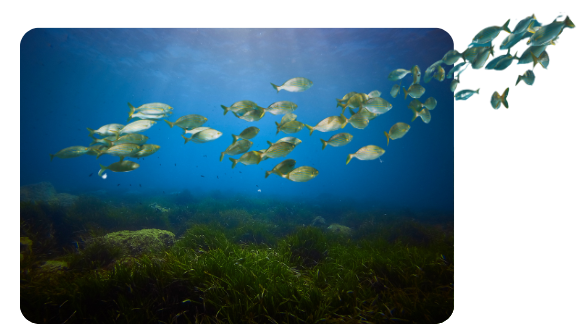
"Exploring the intricate interactions between the ocean and atmosphere in remote marine environments inspires me, and working alongside leading experts who share my commitment to safeguarding our planet makes this work especially rewarding. "
Dr Loren Temple is an Atmosphere-Ocean Scientist within the Marine Processes and Observations group. Her research focuses on the air-sea exchange of climate-active gases through measurements in the marine atmosphere and surface ocean. Understanding the magnitude and direction of these fluxes, along with the chemical, physical and biological processes that influence them, is crucial for assessing their climate impacts and for improving the accuracy of climate models. As part of this work, she has recently been involved in the CARES research cruise which targeted both high and low biologically productive waters in the North Atlantic Ocean.
Previously, Loren completed her PhD in Atmospheric Chemistry at the University of York where she developed a laser-induced fluorescence instrument for the sensitive detection of trace level sulfur dioxide in the remote marine atmosphere. She deployed this instrument on two aircraft campaigns, one looking at shipping emissions and the other over the remote North Atlantic Ocean, and a ship-based campaign to the Arctic.
Key Projects
ConstrAining the RolE of Sulfur in the earth system (CARES), NERC Large Grant
Closing the budget in marine atmospheric Oxidative Capacity through the quantification of Oceanic VOC emissions (COCO-VOC), NERC Large Grant
Selected Publications
Temple, L. G., Young, S., Bannan, T., Batten, S., Bauguitte, S., Coe, H., Grant, E., Lacy, S., Lee, J., Matthews, E., Pasternak, D., Rogers, S. D. A., Rollins, A., Vallow, J., Yang, M., & Edwards, P. M. (preprint). An intercomparison of aircraft sulfur dioxide measurements in clean and polluted marine environments. https://doi.org/10.5194/egusphere-2025-3678
Archibald, A. T., et al. (2025). Data supporting the North Atlantic Climate System Integrated Study (ACSIS) programme, including atmospheric composition; oceanographic and sea-ice observations (2016-2022); and output from ocean, atmosphere, land, and sea-ice models (1950-2050). Earth System Science Data, 17(1), 135–164. https://doi.org/10.5194/essd-17-135-2025
